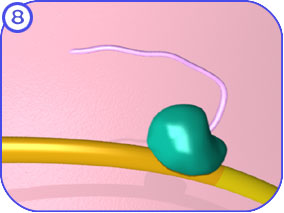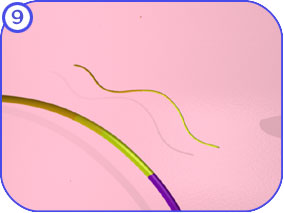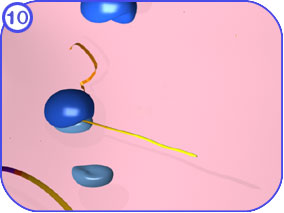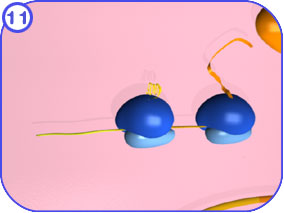





| HOME>> LAC OPERON>> ADVANCED LOOK>> 1.) REPRESSOR>> 2.) EXPRESSION |
Lac Operon: Advanced Look --> 2.) Expression
Once the repressor has been released, expression of the lac genes can take place. In order to express the genes they must first be transcribed and then translated. This section outlines the transcription and translation of the two genes being illustrated: Z and Y. Clicking on each of the thumbnail images will bring up a larger, labeled version of the described scene.
To see the Quicktime movie for the following sequence of images, click here.
NEXT --> 3.) PROTEINS
| HOME>> LAC OPERON>> ADVANCED LOOK>> 1.) REPRESSOR>> 2.) EXPRESSION |